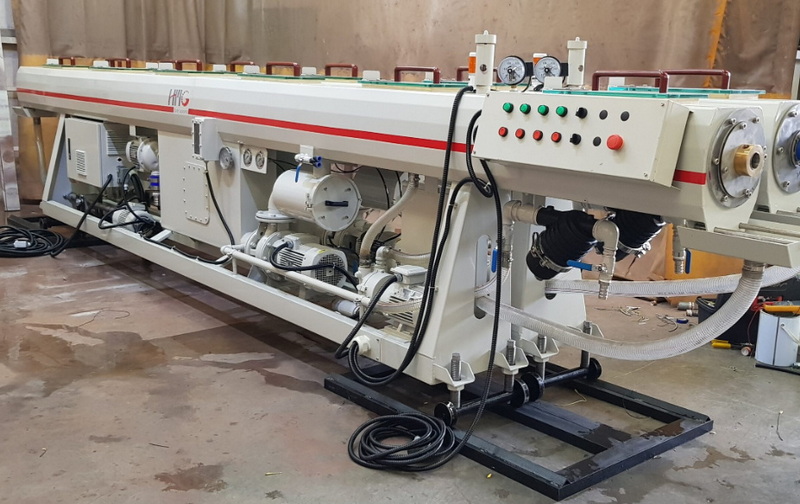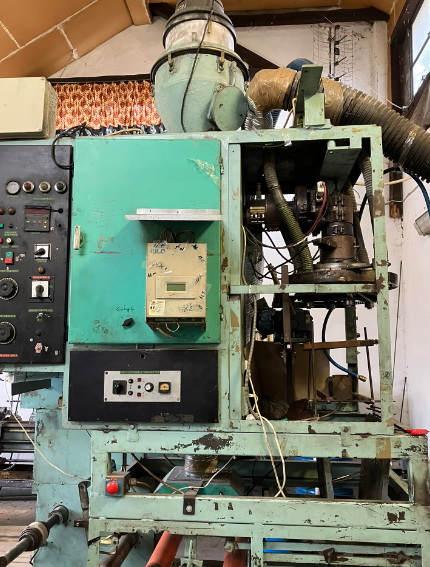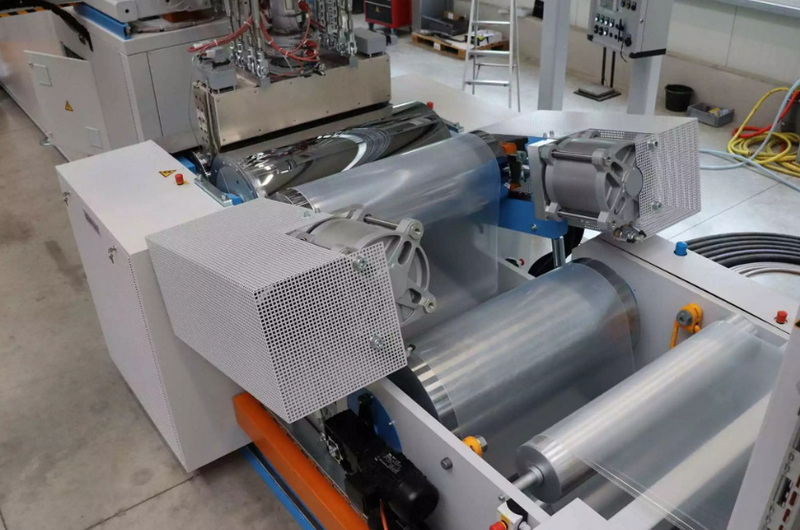Content Menu
● Introduction to Extrusion Machinery
● Benefits of Dedicated Extrusion Equipment
>> 1. Automation and Reduced Labor Costs
>> 2. Real-Time Monitoring and AI Integration
>> 3. Material and Energy Optimization
>> 4. Versatility in Material Processing
>> 5. Enhanced Product Quality
● Applications Across Industries
● Future Trends and Challenges
● Case Studies: Success Stories
● Technological Advancements
● Training and Workforce Development
● Environmental Impact
● Conclusion
● FAQ
>> 1. How Does Dedicated Extrusion Equipment Reduce Material Waste?
>> 2. What Industries Benefit Most from Dedicated Extrusion Technology?
>> 3. Can Dedicated Extrusion Equipment Handle Temperature-Sensitive Materials?
>> 4. How Does Automation Improve Efficiency in Dedicated Extrusion Equipment?
>> 5. What Maintenance is Required for Dedicated Extrusion Machines?
Dedicated extrusion equipment has revolutionized the manufacturing landscape by significantly enhancing production efficiency across various industries. From plastics to metals, extrusion technology allows for the creation of complex profiles with high precision and speed. This article delves into the mechanisms, benefits, and applications of dedicated extrusion equipment, highlighting its role in optimizing production processes.

Introduction to Extrusion Machinery
Extrusion machinery operates by forcing raw materials through a die to create continuous profiles. This process involves several key stages:
1. Material Feeding: Raw materials are fed into a hopper.
2. Melting and Homogenization: A rotating screw heats and mixes the material in the barrel.
3. Shaping: The molten material is pushed through a die.
4. Cooling and Solidification: The extrudate is cooled via water baths or air.
5. Cutting/Spooling: The final product is cut or wound for packaging.
The extrusion process is highly versatile and can be adapted for different materials and applications. For instance, in the production of plastic pipes, the extruder is designed to produce long, continuous lengths with precise dimensions and uniform wall thickness.
Benefits of Dedicated Extrusion Equipment
Dedicated extrusion equipment offers several advantages that improve production efficiency:
1. Automation and Reduced Labor Costs
- Servo-driven controls for precise temperature and pressure adjustments.
- Robotic arms for material handling and product sorting, reducing labor costs by up to 40% while improving workplace safety.
Automation not only reduces labor costs but also enhances product quality by minimizing human error. For example, automated systems can detect defects in real-time, allowing for immediate adjustments to the production process.
2. Real-Time Monitoring and AI Integration
- IoT sensors detect anomalies instantly.
- AI predicts maintenance needs, reducing downtime by 25%.
Real-time monitoring systems equipped with AI can analyze production data to optimize settings for maximum efficiency. This predictive maintenance ensures that equipment is always running at optimal levels, reducing unplanned shutdowns and extending the lifespan of machinery.
3. Material and Energy Optimization
- Material waste reduction: Excess material is recycled into the production cycle, achieving 95%+ material utilization.
- Energy efficiency: Modern extruders consume 20–30% less energy via servo motors and optimized heating zones.
Energy efficiency is crucial in reducing operational costs and environmental impact. By using advanced insulation and energy recovery systems, manufacturers can further minimize energy consumption without compromising production quality.
4. Versatility in Material Processing
- Dedicated extrusion equipment can handle diverse materials, including thermoplastics, metals, and composites.
This versatility allows manufacturers to produce a wide range of products, from automotive parts to medical devices, using the same equipment. This flexibility is particularly beneficial for companies that need to adapt quickly to changing market demands.
5. Enhanced Product Quality
- Dedicated extrusion equipment ensures consistent product quality through precise control over temperature, pressure, and material flow.
Consistent quality is essential for maintaining customer satisfaction and compliance with industry standards. By ensuring that every product meets stringent specifications, manufacturers can build trust with their clients and maintain a competitive edge in the market.

Applications Across Industries
Dedicated extrusion equipment is widely used in various sectors:
- Automotive: Lightweight aluminum frames improve fuel efficiency by 15–20%.
- Construction: PVC pipes and window profiles offer corrosion resistance and a 50-year lifespan.
- Packaging: Blown film for bags is produced at high speeds.
In the automotive sector, extruded aluminum parts are used to reduce vehicle weight, which not only enhances fuel efficiency but also improves handling and safety. Similarly, in construction, PVC pipes are preferred due to their durability and resistance to corrosion, making them ideal for water supply systems.
Future Trends and Challenges
Recent innovations include AI-driven predictive maintenance and hybrid extrusion systems combining hot and cold processes. However, challenges such as maintaining high-quality equipment and adapting to new materials remain.
One of the future trends is the integration of Industry 4.0 technologies, which will further enhance automation and data-driven decision-making. This could involve using machine learning algorithms to optimize production parameters based on real-time data from sensors and feedback systems.
Case Studies: Success Stories
An aluminum extrusion plant increased its Overall Equipment Effectiveness (OEE) from 20% to 58% using real-time monitoring, improving efficiency and reducing energy consumption. This was achieved by implementing a comprehensive monitoring system that tracked production metrics and provided insights for process optimization.
Another case study involves a plastic pipe manufacturer that reduced material waste by 30% by implementing a recycling system for excess material. This not only reduced waste but also lowered production costs by minimizing the need for new raw materials.
Technological Advancements
Technological advancements in dedicated extrusion equipment continue to evolve, with a focus on sustainability and efficiency. For instance, the development of electric extruders offers a cleaner alternative to traditional hydraulic systems, reducing environmental impact while maintaining performance.
Additionally, advancements in die design have enabled the production of complex profiles with high precision. This is particularly beneficial for industries requiring intricate designs, such as aerospace and medical devices.
Training and Workforce Development
As dedicated extrusion equipment becomes more sophisticated, there is an increasing need for skilled operators and technicians. Training programs that focus on automation, AI integration, and predictive maintenance are essential for ensuring that the workforce can effectively manage and optimize these systems.
Moreover, continuous education on safety protocols and best practices is crucial in maintaining a safe working environment. This includes training on emergency procedures and regular drills to ensure preparedness.
Environmental Impact
Dedicated extrusion equipment contributes to sustainability by reducing energy consumption and material waste. Modern extruders are designed with energy efficiency in mind, using advanced insulation and energy recovery systems to minimize environmental impact.
Furthermore, the use of recycled materials in extrusion processes helps reduce the demand for virgin raw materials, contributing to a more circular economy. This approach not only benefits the environment but also reduces production costs by minimizing waste and optimizing resource use.
Conclusion
Dedicated extrusion equipment plays a crucial role in enhancing production efficiency by integrating automation, real-time monitoring, and material optimization. Its versatility and cost-effectiveness make it a preferred choice across industries. As technology continues to evolve, we can expect even more innovative solutions that further improve efficiency and sustainability.

FAQ
1. How Does Dedicated Extrusion Equipment Reduce Material Waste?
Dedicated extrusion equipment reduces material waste by recycling excess material back into the production cycle, achieving over 95% material utilization.
2. What Industries Benefit Most from Dedicated Extrusion Technology?
Industries such as automotive, construction, and packaging benefit significantly from dedicated extrusion technology due to its ability to produce lightweight, durable, and versatile products.
3. Can Dedicated Extrusion Equipment Handle Temperature-Sensitive Materials?
Yes, dedicated extrusion equipment can handle temperature-sensitive materials by using advanced temperature control systems to maintain optimal conditions.
4. How Does Automation Improve Efficiency in Dedicated Extrusion Equipment?
Automation in dedicated extrusion equipment improves efficiency by reducing labor costs, enhancing precision, and minimizing human error through servo-driven controls and robotic arms.
5. What Maintenance is Required for Dedicated Extrusion Machines?
Regular maintenance for dedicated extrusion machines includes cleaning, lubrication, and predictive maintenance using AI to reduce downtime and ensure consistent performance.






















